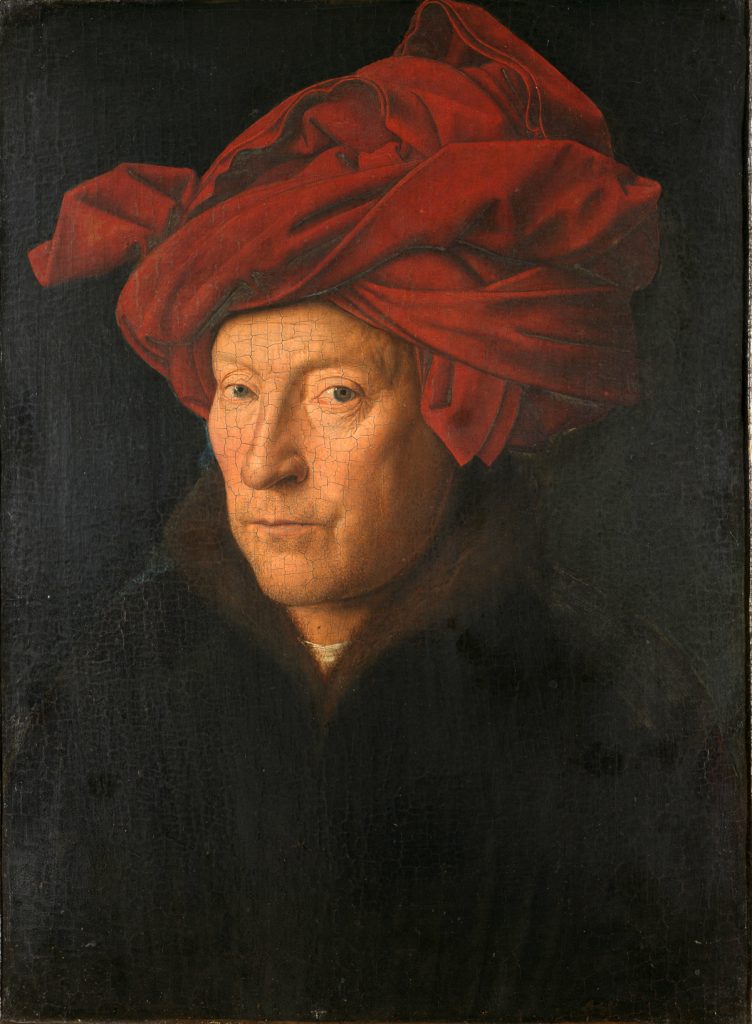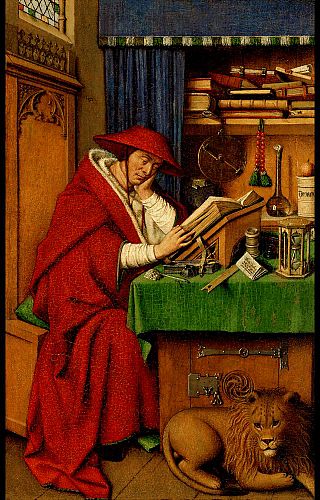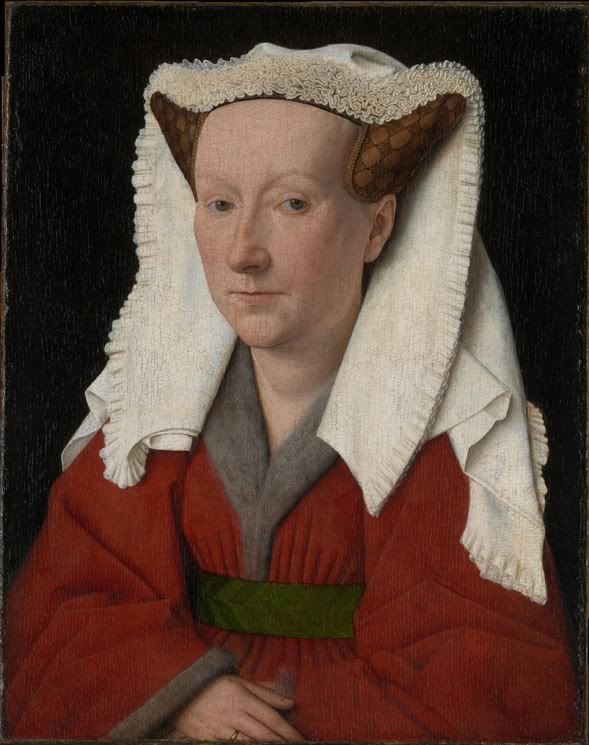Who was Jan van Eyck

Jan van Eyck was born in the late Middle Ages, somewhere between 1385 and 1390. He must have been born before 1395, for in October 1422 he is recorded as the varlet de chambre et peintre (“honorary equerry and painter”) of John of Bavaria, count of Holland.
Young Jan van Eyck is first mentioned in the archives in the 1420s. At the time he was employed in the ducal city of The Hague. After the death of his patron, he returned to the Burgundian Netherlands. He first lived in Lille, then in Bruges.
Jan van Eyck is credited with originating a style of painting characterised by minutely realistic depictions of surface effects and natural light. This was made possible by using an oil medium, which allowed the building up of paint in translucent layers, or glazes.
Little is known of van Eyck’s origins, but he probably came from Maaseik, near Maastricht, and was of the gentry class. Jan van Eyck had around five brothers and sisters, all of them artists. He is first heard of in 1422 working in The Hague for John of Bavaria, ruler of Holland. From 1425 he was at Bruges and Lille as painter to Philip the Good, Duke of Burgundy. In 1428 van Eyck was sent to Portugal to paint Philip the Good’s future wife, Isabella of Portugal.

Detroit Institute of Arts
Van Eyck painted many religious commissions and portraits of Burgundian courtiers, local nobles, churchmen and merchants. A small group of his paintings survive with dates from 1432 onwards. One of his most famous works is the ‘Arnolfini Portrait’, signed and dated 1434. It is thought that his ‘Portrait of a Man’ may be a self portrait.
Van Eyck began working for the Duke Philip the Good of Burgundy on May 19th 1425, a patron who would continue to provide financially for Eyck and his family even after the artist’s death.
Working for the Duke, van Eyck was involved in much more than just painting, such as decorating, engraving, designing costumes, paint shields, stain banners and colouring statues.
Jan van Eyck moved to Lille but would soon embark on the first of his many trips for the Duke, including at least two secret voyages. The first voyage was most likely to Italy in the autumn of 1425 where it is suggested that he picked up Italian influences. He spent the next two years in Lille working on decorating the walls at the ducal residence as the building was being redone.
In October 1428 van Eyck accompanied the Burgundian embassy to Portugal. The Duke was asking for the hand of the eldest daughter of John I, Isabella. In Portugal van Eyck painted Isabella’s portrait Infanta. He probably painted two versions and sent them back to Philip the Good via two toutes, one travelling over land and the other over sea.
The group made trips to Santiago de Compestela to visit John II of Castile and Muhammad IX in Grenada. The Duke agreed to the marriage and the party arrived home in December of the next year.

In 1430 Jan van Eyck settled in Bruges and began working on the Ghent panels left unfinished by his brother. Although there is still much debate, it is assumed that the altarpiece was completed by Jan and his brother, Herbert. It is thought that Herbert is responsible for the overall concept of the altarpiece and probably the enthroned figures in the central top panels in the interior.
Around 1431 van Eyck married Margaret, of whom there is only one portrait of, and had at least two children.
Although under the call of the Duke, Jan received commissions from churches and other persons such as the Arnolfini Portrait of 1434.
Around this time he also began to create portraits. Such works are unique as they focus in on the subject with a light source usually from the left. The figures are turned three-quarters towards the light hiding the left cheek in shadow.
In 1445 Jan was commissioned by Nicholas van Maelbeke to paint a triptych which was never completed. The date of the artist’s death is unknown but it’s presumed that he died while painting the triptych
Credits:
wikipedia.org/wiki/Jan_van_Eyck

